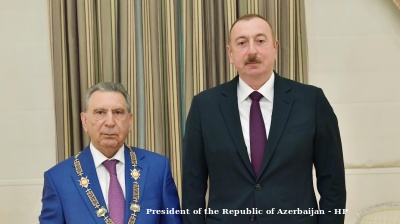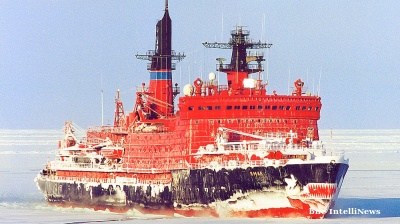Russia’s ruble continued to rally strongly, dropping below the psychologically important RUB60 to dollar barrier again this week, its strongest level in four years.
Russia’s national currency has been on a wild ride that is playing havoc with the economy. McDonald's has just pulled out of Russia but just before it left it was selling Big Macs for RUB135 or at January exchange rates for $1.76, making it one of the cheapest in the world and less than half the $4 it costs on average in the US. In the first days after the war started the cost of a Big Mac dropped to only $1, but this week with the ruble trading at RUB58 to the dollar on May 24 the same burger at the same ruble price costs $2.25 in dollar terms.
The ruble is the best performing currency in the world this year on paper, up 30% YTD, but analysts say the rally may be coming to an end and the exchange rate is artificial after the Central Bank of Russia (CBR) introduced strict emergency capital controls following the imposition of extreme sanctions by the West following Russia’s invasion of Ukraine on February 24.
“Basically, the ruble exchange rate can go anywhere where the government or CBR want it to be. We calculate the ruble’s fair, i.e. fundamentally backed, trading range should be in the RUB75-85/$ corridor,” Chris Weafer, CEO of Macro Advisory, said in an op-ed for bne IntelliNews last week.
The ruble has been gaining strength since collapsing in the last week of February to RUB133 to the dollar, its weakest level in about five years. However, the CBR’s capital controls, including a mandatory FX surrender requirement on 80% of exporter’s foreign earnings and a ban on withdrawing foreign exchange for retail investors, saw the national currency quickly recover.
Having traded in the 70s for most of last year until geopolitical tensions flared at the end of October, the rate dropped into the 80s during several rounds of diplomacy that attempted to stave off a crisis.
In the last month the currency has strengthened markedly and traded under RUB60 briefly last week on May 20, but recovered to just above RUB60 to the dollar until trading resumed on May 23 after the weekend and the rate stepped down again. The exchange rate was RUB57.14 at the close of trade on May 24.
Normally a strong ruble would pull in exports from overseas, but with the slew of sanctions inbound trade has collapsed by as much as 70% in the first quarter of this year, according to preliminary estimates, and with foreign companies “self-sanctioning” that has driven down exports even more.
A strong ruble is bad for exports, but as the bulk of Russia’s exports are commodities, many of which are at decade-long high prices, the exchange rate dynamics are not expected to affect the level of exports either.
However, economists say that the strong ruble will hurt government finances as the Russian budget sets its oil-based tax revenues in dollars, which are then converted into rubles that are actually spent. What this arrangement means is that in times of crashing oil prices the budget receives more rubles to spend, albeit less valuable, but as expenditure is all denominated in rubles the government has more ruble cash on its accounts to use.
Conversely, when the ruble appreciates strongly that squeezes public expenditure, as the budget receives fewer rubles, albeit more valuable ones. With the collapse in imports this will be a problem this year, as Russia can’t import more, despite the fact that it has more foreign exchange to spend. The budget for 2022 has been drawn up based on the exchange rate of RUB72.1 to the dollar.
Revenues from oil and gas exports continue to support the Russian budget despite sanctions discounts and a collapse in VAT receipts, the other main source of funds, due to depressed consumer demand.
Oil and gas revenues have exploded this year after the average price of Russia’s Urals blend ran at $70.5 (a discount to Brent of $35) against the budgeted assumption of $42, leading to an income of RUB1.8 trillion ($31.8bn) in April, up from RUB1.2 trillion in March.
Compared to April 2021, oil and gas budget revenues have doubled. Their share in total budget revenues at the end of the month was 63% and over the first four months of 2022 it was 48%, compared with 36% and 28% respectively a year earlier.
But the windfall has not translated into large budget surpluses. In April the federal monthly budget was in deficit of RUB262.3bn ($4.63bn), but over the first four months the budget was in surplus of RUB1.04 trillion.
All else being equal, Russia should post a surplus of RUB4bn if the oil prices and exchange rate remain the same, but with the economy expected to contract by between 8% and 15% this year the state is preparing to roll out a social spending support programme very similar to that used during the coronacrisis in 2020 that the Ministry of Finance estimates will cost the same RUB4bn.
With the war in Ukraine costing some $300mn a day and companies and banks needing support as well to cope with the contracting economy, funding the budget remains tight. And if the ruble appreciates any more the situation will only become tighter.
Finance Minister Anton Siluanov is already predicting a possible federal budget deficit of at least RUB1.6 trillion by the end of the year, depending on how the war goes and what happens to the exchange rate and the oil price.
According to Sofia Donets, chief economist for Russia and the CIS at Renaissance Capital, with an average annual oil price of about $80 per barrel and a 20% decrease in exports the budget deficit will be near zero but with oil at an average of $85, and an exchange rate of RUB60 to the dollar the deficit will be up to RUB3 trillion.
Controlling the ruble
Will the ruble appreciate further? The Ministry of Economic Development said in the last week that it believes the ruble strength has peaked. But analysts warn that the authorities have no simple tools left to slow down the rate of appreciation other than cutting the CBR prime rate.
The CBR immediately doubled interest rates to 20% within days of the start of the war but cut rates twice in April to 17% and then again to 14% at the end of the month as inflation pressures eased and the ruble made back much of its losses from the first days of the war.
Going forward, CBR Governor Elvira Nabiullina says that inflation pressures have eased and the regulator hopes to bring inflation down to its target level of 4% in 2023.
The Economy Ministry anticipates ruble weakness. In the middle of May the Economy Ministry issued its macro-forecast assumptions for 2022-25. In its review it assumed the average annual US dollar exchange rate in 2022 will be RUB76.7/$ and, by the year-end, the ruble will grow to RUB76/$, but further short-term appreciation cannot be ruled out, says Weafer.
At the same time some of the currency controls are coming off. The Ministry of Finance reduced the level of mandatory sale of export earnings from 80% to 50% on May 24, which will also ease pressure on the ruble.
The Ministry said the ruble exchange rate has stabilised and there is also sufficient foreign currency liquidity in the system to reduce its needs to raise dollars for the domestic foreign exchange market, although analysts say it is not clear when the easing of the surrender requirement will come into effect.
In April the Central Bank also loosened its grip and extended the period for the sale of foreign currency for non-resource non-energy exports from three to 60 working days. There is a delay in the receipt of payments by exporters and there is a delay in the sale of foreign currency, which means it may not start working for several months yet, Donets told The Bell. And due to the need for ruble funds to cover tax and other obligations, exporters will still exchange more foreign exchange earnings than 50%, she explains.
Part of the reason for this week’s spike in the value of the ruble was due to the fact that the mineral extraction tax (MET) payments came due on May 24, forcing raw material producers to sell dollars in large quantities to get rubles to pay their taxes. Analysts say once the tax payment deadline is passed the ruble will begin to weaken again.
In addition, it is now difficult for Russian companies to keep money in foreign currency and in the foreign financial system due to sanctions risks, general uncertainty, problems in finding counterparties, and financial volatility, which is encouraging them to change the currency to rubles, reports The Bell.
To date, the average annual dollar rate is still above RUB80 and so even if there is a deficit this year it will not be that big and can be covered by the accumulated reserves – for this year at least, says Donets.
Experts are mostly of the opinion that the ruble is currently well overvalued. Before the war broke out Russia was starting to boom and analysts had forecast an exchange rate of RUB70 to the dollar, but said that without the additional “Russia risk” discount the fundamental value of the national currency was around RUB65.
One of the simple ways to stop the strengthening of the ruble now is to do everything possible so that companies can pay their foreign debt in foreign currency, stimulate such payments, and even help. But the West is making that as hard as possible after imposing sanctions on the Central Bank of Russia’s gross international reserves (GIR) on February 27, followed by SWIFT sanctions that cut seven banks off from the international payments system.
And it's about to get worse for Russian companies, willing to pay their debts but unable to as the compliance departments at foreign counterparties are avoiding Russian clients like the plague. In the last three months several bond payments have come due but even Russian companies with no connection to anyone named on the various sanctions lists have turned their business away, afraid of exposure to secondary sanctions further down the road. For those companies desperately trying to avoid default, such as Russian Railways or steel mill Severstal, they had to get explicit Oks from the US Treasury Department Office of Foreign Assets Control (OFAC) before their western banks would handle their money.
Another option for reducing the value of the ruble is to reduce exports – something that the Kremlin would obviously prefer to avoid but something that is being forced on it anyway as Europe slowly begins to cut off imports of Russia oil, gas and coal. But due to the infrastructural problems involved with switching a German pipe-fed oil refinery to tankers coming by sea from the Kingdom of Saudi Arabia, the fall in that export revenue for Russia is going to play out slowly over the next few years.
Features

Andaman gas find signals fresh momentum in India’s deepwater exploration
India’s latest gas discovery in the under-explored Andaman-Nicobar Basin could become a turning point for the country’s domestic upstream production and energy security

The fall of Azerbaijan's Grey Cardinal
Ramiz Mehdiyev served as Azerbaijan's Presidential Administration head for 24 consecutive years, making him arguably the most powerful unelected official in post-Soviet Azerbaijan until his dramatic fall from grace.

Ambition, access and acceleration – Uzbekistan’s Startup Garage opens free academy for entrepreneurship
Aim is to train 50,000 young founders by 2030.

Ukraine’s growing energy crisis promises a cold and dark winter
Since the summer, Kyiv has changed tactics. Given the almost complete failure of Western oil sanctions to curb Russian oil exports, it has been targeting Russian oil refineries. The Kremlin has struck back, targeting Ukraine's power system.




